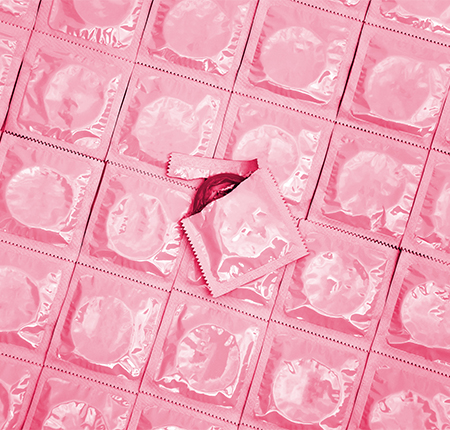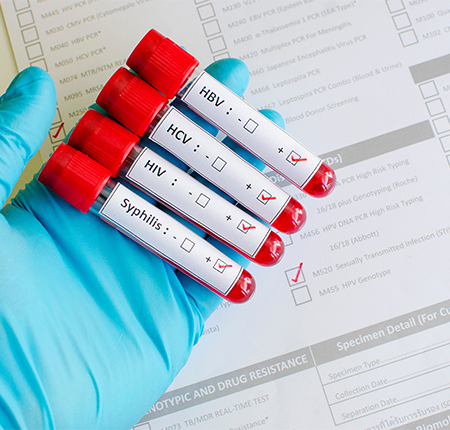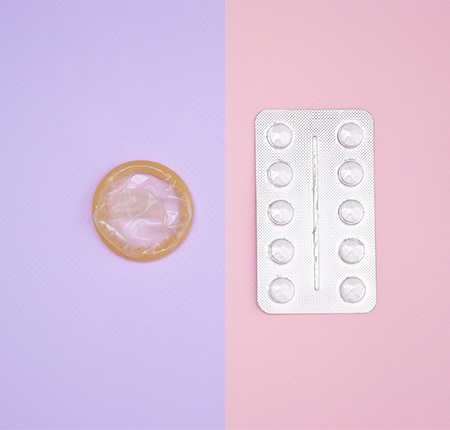
Withdrawal method as a method of contraception? Not really! Today we know that we have more effective alternatives. But due to lack of information and the classic "let it not happen to me", many women said "yes" before, and some continue to do so even now without knowing the risks they are exposing themselves to.
Also called " coitus interruptus ", the withdrawal method has its origins in the ancient Roman and Greek civilizations, which preferred small families and for this reason used various methods of contraception, including the withdrawal method. The problem is that the older it is, the more disadvantages it has. But unfortunately not all women know this and worse, its age is interpreted as validation and gains the trust of many misinformed couples. As does the calendar method with which it is often used, another old method for calculating the fertile window, which I explained for everyone's understanding HERE .
At the same time, we also understand that sex and contraception are still taboo topics, and maybe you were too embarrassed to ask someone, or you didn't have anyone. So today we're talking about the withdrawal method, why it's NOT effective in terms of contraception or safety, and what safer alternatives are available to you to prevent an unwanted pregnancy.
What is the withdrawal method
The withdrawal method , also known as coitus interruptus, is an ancient and not very effective contraceptive method that couples use in an attempt to prevent an unwanted pregnancy.
Coitus interruptus actually means interrupted or incomplete coitus, meaning the interruption of sexual intercourse and the withdrawal of the penis from the vagina before ejaculation. And that's exactly what it entails: for the partner to remove the penis from the woman's vagina before the sperm is released. The method is based on the fact that if the seminal fluid is released to the outside, the sperm will not reach the fallopian tubes to be fertilized, and thus a pregnancy will not be created.
If this is the case and how effective this method really is, we will tell you right away.

How the withdrawal method works
Besides being risky, the withdrawal method is not easy either. It's a real challenge for your partner not to lose focus and get so close to orgasm that it's too late to pull back. His self-control becomes the foundation of this method of contraception.
If you still want to use this method, here are some things that can increase its effectiveness:
- Also use a spermicide : a topical contraceptive substance in the form of cream or eggs that destroys sperm. Choose your spermicide carefully, especially if you have sensitive skin, because it can cause allergic reactions.
- Avoid the withdrawal method during the fertile period : when you are more likely to get pregnant. This is why many people use the withdrawal method along with the calendar method to track their ovulation period.
- Take the morning-after pill : after sexual intercourse, especially if it happens occasionally, because the tide has taken off. But don't abuse it, because it contains a large amount of hormones and can cause hormonal imbalances. It is not a contraceptive method, but an emergency contraceptive method.
- Encourage your partner to urinate : before starting a new sexual act, especially if your partner has ejaculated once before. This ensures that any traces of semen are removed before penetration.
- Make sure the sperm doesn't reach your private area : after withdrawal, the ejaculation should be somewhere other than your inner thighs, abdomen or vulva. Thus, the seminal fluid does not reach the vagina, and the partner's effort to withdraw in time is not in vain.
How effective is the withdrawal method
Although using the withdrawal method is slightly more effective than not using any contraceptive method at all (if you want to prevent pregnancy), it gives you no guarantee that it will work. But it only reduces the probability of a pregnancy.
According to statistics, one in five women who rely only on the withdrawal method for contraception become pregnant, and only in about 80% of cases it works effectively. And that's because there are many things that coitus interruptus doesn't take into account, including the level of self-control of the partner and the pre-ejaculatory fluid.
But we talk below about the safety and risks of this method.

How secure the withdrawal method really is
We want to explain to you exactly what it is based on and why you cannot be sure that you will not get pregnant with the withdrawal method. So here's what can go wrong:
- Premature ejaculation ‒ the whole point of withdrawal is to control your partner. In order to get pregnant, an ejaculation in the vagina is necessary, and by interrupting the sexual act, theoretically this does not take place. But there is a possibility that the partner will ejaculate prematurely and unpredictably, thus skipping the stage on which this method is based: withdrawal in time.
- Sexually Transmitted Diseases ‒ With or without ejaculation, having sex without a condom will not protect you from a sexually transmitted infection. Viruses, bacteria and parasites are not transmitted through semen, but through intimate contact, so the method does not offer you protection against diseases such as Chlamydia, Gonorrhea, trichomoniasis, HIV, etc.
- The ineffectiveness of the method - even if you do everything by the book and the partner withdraws on time, there is still a possibility of getting pregnant. So that the spermatozoa are not only in the seminal fluid, but also in the pre-ejaculatory fluid, so that a pregnancy can begin even if there has been no ejaculation. No matter how well his partner controls the moment of ejaculation, he will not be able to control this fluid during intercourse, and the failure is exclusive to the method itself.
The good news is that there are many other contraceptive methods that can give you much better protection, including against sexually transmitted infections, and we'll talk about those towards the end of the article.

The risks of the withdrawal method
If one thing goes wrong in the withdrawal method, contraception is compromised. Which from the start makes it a very risky method. To give you a clear overview, I have made a list of the major risks of this method :
- The partner may ejaculate prematurely, without having time to withdraw in time
- Sperm can still reach the vagina through the pre-ejaculatory fluid
- You can get infected with a sexually transmitted disease
- Both of you can experience less sexual pleasure due to stress, because instead of enjoying the sensations you focus on controlling the moment of ejaculation
Why the withdrawal method is common
So if it's so risky and you can still get pregnant with the withdrawal method, why is it still used? Well, beyond the lack of correct information and all the disadvantages we talked about, couples still have some good reasons why they still choose to trust it:
- It is within reach : it does not require any financial investment, time or energy to search for and use other contraceptive methods
- It is accessible at any time : so it is compatible with an unplanned, spontaneous sexual act, for which you and your partner have not prepared with other contraceptive methods
- It does not create hormonal imbalances directly : unlike the contraceptive pill, for example, the withdrawal method itself does not affect the hormonal level and has no other side effects (except in cases where a sexually transmitted disease is transmitted from the partner that can affect the hormonal balance )
- It has no religious implications: unlike condoms, birth control pills or other methods that are condemned by certain religions or cultures.
The best alternatives to the withdrawal method
But let's get back to what reality looks like: 1 in 5 women who rely only on the withdrawal method get pregnant, and these statistics are not negligible. So it is important to keep in mind that even when used correctly, the risk of an unwanted pregnancy still exists.
Plus it doesn't give you any kind of protection against sexually transmitted diseases, which makes it very unsuitable if you have a new partner or change sexual partners often.
Therefore, we recommend that you do not have much faith in its potential to protect you, but to turn to other methods of contraception whose effectiveness is medically confirmed. And because we want you to be as well informed as possible from reliable sources, we tell you the essential details about the best alternatives to the withdrawal method.
The male or female condom
It is the most well-known and effective barrier contraceptive method , single-use, which protects you both from an unwanted pregnancy and from sexually transmitted diseases, because it does not allow direct contact between the penis and the vagina.
The male condom is the one that the partner wears, and that does not allow sperm or pre-ejaculatory fluid to reach the vagina. What you need to know about it:
- If used correctly, it has a 98% success rate in preventing unwanted pregnancies.
- There are male condoms made of various materials, but most are made of latex.
- Most condoms are already lubricated.
- For latex condoms, you can use water-based lubricants.
- Avoid using oil-based lubricants with latex condoms, as they can break and lose their protection.
There are also female condoms, which are inserted into the vagina up to 8 hours before sexual intercourse and which, likewise, do not allow seminal or pre-ejaculatory fluid to come into contact with your body. Their advantage is primarily that they give you more control over contraception (you no longer depend on your partner's desire to wear a condom or not). But there are also benefits for the partner, such as the disappearance of the feeling of "squeezing him", and the fact that they do not reduce his pleasure like a male condom. Used correctly, female condoms are 95% effective in preventing unwanted pregnancies.

Contraceptive pills
This time an oral contraceptive method, birth control pills are another pregnancy prevention method used by many women. Their downside is that they introduce a lot of synthetic hormones into your body, which can cause hormonal imbalances and have various side effects. It also doesn't protect you from sexually transmitted diseases.
Instead, it gives you the advantage that you are in control and the pregnancy is not dependent on your partner's decisions. Pills can also be prescribed by the gynecologist to regulate the menstrual cycle. If you want to talk more about birth control, I wrote a blog post where we tell you everything you need to know. You can read it HERE .
We also mention the morning-after pill here. It is also a contraceptive pill that prevents pregnancy with the help of synthetic hormones, but we do not advise you to use it often. It is an emergency contraceptive pill , for those occasions when another method of contraception has not been used or has failed. Frequent use is not recommended, as it can cause hormonal imbalances and long-term side effects.
The copper IUD
The copper IUD is a T-shaped device made of plastic and wrapped with a copper wire. It enters the uterus and causes an inflammatory reaction that is toxic to the sperm. Basically, copper works as a spermicide that prevents fertilization and the formation of a pregnancy for up to 10 years.
It is also good to know that the IUD is a medical device and was not designed to be used by yourself. Only the gynecologist can insert and extract it safely, using the appropriate tools. So don't try to insert it yourself, but make a visit to the specialist doctor.
Vaginal contraceptive ring
Like the birth control pill , the vaginal ring works by containing the same hormones that prevent the egg from implanting and starting a pregnancy. Only this time it is not administered orally, but inserted into the vagina. It is made of flexible and thin plastic, and you can insert it yourself without medical assistance.
However, we recommend that you talk to your gynecologist before using a contraceptive ring, so that he can give you the necessary indications so as to ensure its effective operation. Depending on the type of ring, you will need to take it out after a certain period of time and take a few days off before inserting a new ring.
Also, if you take it out during intercourse, you will need to put it back in within three hours at most. Your gynecologist can give you all this information and other useful tips on how to use this method to prevent pregnancy.
Vasectomy
We conclude the list of contraceptive alternatives with a method that this time gives your partner control, regardless of your choice to use a contraceptive method or not. It is a low-risk surgical intervention with an efficiency of almost 100%, which is done under local anesthesia and consists of blocking the tubes that lead the sperm into the seminal fluid so that there is no longer any possibility that the spermatozoa will reach the partner's vagina .
It is a permanent contraceptive method , of sterilization, which can be chosen by men who no longer want children. As a result, you and your partner can enjoy a sex life without the risk of a new pregnancy, without having to use any other contraceptive method.























